“Food is a little universal anchor and a way of identification”
A “tasty” story of Ms. Stefa’s Galician cuisine
Tasting Galician dishes, you are sure to feel not only an original blend of local foodstuffs’ flavors, but also the touch of other cultures. It is easy to trace the Italian motif in Leopolitan lazanki (a type of pasta). You can’t help feeling influence of Jewish traditions in the vorschmack (a dish made of salty minced fish or meat). And the nutritious parzyborda (savoy cabbage soup) is an aromatic repercussion of the culture of Lviv-based Armenians.
The phenomenon of Galician cuisine is being actively studied now. Particularly, it is Marianna DUSHAR, a Leopolitan researcher of Galician cuisine, who has achieved great successes in this historical-culinary field. But it would be fairer to speak about the legendary Ms. Stefa who is always glad to give advice to Galician housewives. Marianna created this image of a Galician woman for her blog, combining in Ms. Stefa the images of her grandmothers who cooked superbly and handed down the love for cooking to their granddaughter. In her blog panistefa.com and on her Facebook page, Dushar gathers old local recipes. Ms. Stefa, as an idea and a figure, is more than 10 years old. In this time span, she has shared hundreds of recipes of Galician dishes and still continues to popularize local cuisine.

Ms. Stefa is the best-known Galician housewife. Dushar herself notes that she is neither a culinary blogger nor a cook but, first of all, a researcher, the blog and cooking being just separate aspects of studying Galician cuisine.
“I am trying to read as much as possible, look for old recipes and just information on this matter,” Dushar says. “I don’t post everything in the blog because not all of this will be of interest to the reader. I’ve noticed that once you write a bit more serious piece of culinary research, there will be fewer comments. A long mind-bending text is often not interesting to the average reader. They are interested in a recipe that can be used at home. But some, on the contrary, find it interesting to dig deeper and read about the history of a dish. So, I am trying to post from time to time various culinary-historical essays in my blog.”

Den/The Day decided to “dig deeper” not only into the history of Galician cuisine, but also into the very essence of cuisine as a thing that can knit people together. Marianna Dushar helped us do so, and our “tasty” talk lasted for several interesting hours.
“GALICIAN CUISINE IS A MUTUAL PENETRATION, DIFFUSION OF DIFFERENT CULTURES”
“Above all, you should know the conditions in which Galician cuisine was formed. It is rather simple and complex at the same time, for Galicia had always been in interesting political situations. It was always at the intersection of trade roads. This is especially true of Lviv.
“Galician cuisine is a mutual penetration, a diffusion of different cultures. The Galician, particularly Leopolitan, traditions formed under the influence of the ethnoses that populated the region and current circumstances. It is interesting to see today the way Galicia was building ‘culinary bridges’ with the Greeks, Poles, Armenians, Italians, Germans, Austrians, Frenchmen, et al.”

LAYING “GASTRONOMIC BRIDGES”
“For example, there was quite a large Greek community in Lviv. The name of the Greek Konstanty Korniakt added a glorious page to the city’s history. The influence of him and other Greeks on the history of Lviv is indisputable.
“‘The Greeks came and brought lemons’ is the example researcher of Leopolitan cuisine Ihor Lilio often cites. Lemons were not characteristic for Galicia, but Greeks brought this fruit here. An expensive item, it was consumed by a certain stratum of the population. Then it served as a basis of some dishes.
“The gastronomic tastes of city dwellers were by no means banal at that time. Take, for example, the lemon soup. It was cooked in thick veal brine, with rice, lemon juice, and all this was eventually seasoned with a sour cream and yolk dressing. You can find this soup in old cookbooks that date back to the late 19th century. But what does this record mean? It means that lemons and rice were in common use. But, most interestingly, Greek national cuisine includes the soup ‘avgolemono’ which is 99 percent identical with our lemon soup. The only difference is that we cook it with veal, while they use poultry.
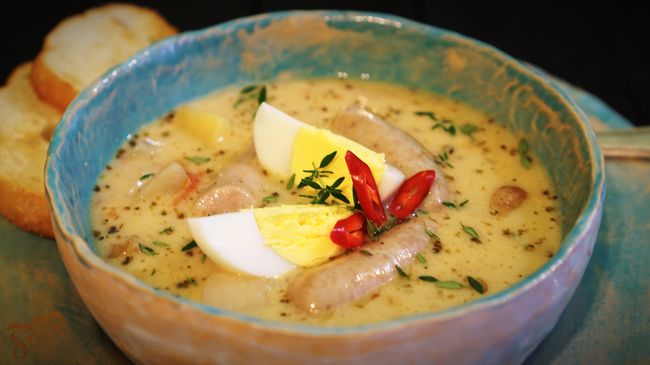
“There are stories of this kind for many foodstuffs and dishes. It is very interesting to find out how these ‘gastronomic bridges’ were laid. Sometimes it is facts which we can prove on the basis of archival or anecdotal evidence, and sometimes it is a ‘plausible assumption.’ Anyway, it is always a very interesting entertainment.”
ON URBAN AND RURAL GALICIAN CUISINE
“Galician cuisine is quite clearly divided into urban and rural.
“Urban cuisine – more ingenious and rich – was based on what could be bought. The abovementioned cultural exchange is particularly apparent in urban cooking. For example, if some Germans or Italians came to build roads, they surely brought something of their own. Or if the city hall organizes a ball in honor of a foreign ambassador, they use some ‘insider info’ about what he may like – it is an impetus, progress, isn’t it?
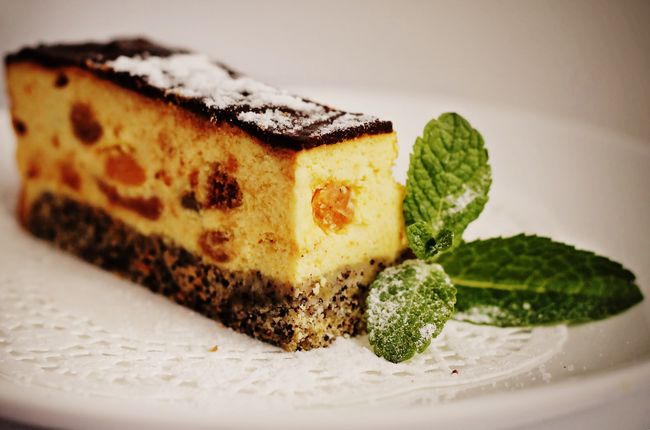
“And Leopolitan lazanka and Italian lasagna? This is a story with a clearly noticeable Italian flavor. It is widely believed that it all began with Bona Sforza, the daughter of a Milanese duke, who married King Sigismund I the Old of Poland in 1518. She brought in not only a large retinue, including cooks, but also some hitherto unknown foodstuffs and dishes. It is the new vegetables, fruits, and herbs brought from Bona’s homeland that caused many interesting dishes to appear in our country.
“I say half-jokingly that all this cultural exchange is still going on – only methods have changed. For example, Parmesan, which is mentioned in old recipes, is still being brought here, as it was before. As housewives once borrowed and ‘Galicianized’ recipes, so they are still doing so. And while trade in delicacies used to seethe on Market Place, now the same and other delicacies are sold in such shops as ‘Goods from Italy.’
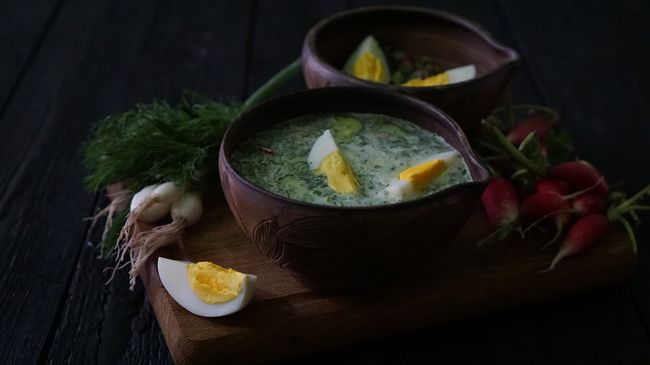
“We can’t also help but recall rural Galician cuisine. It was based, above all, on what was grown in the vegetable garden, gathered in the forest, or caught in the river. There were turnips, parsnips, beetroots, and pumpkins here, and, later, potatoes and corn. And, of course, grains – oats, wheat, rye, and barley… This is why Galician rural cuisine always comprised a lot of serials-based dishes, for example, ‘sprinkled cabbage.’ Rural cuisine is very practical and much more easier-to-grasp than the urban one. The purpose of this cuisine is to get one well-fed in order to work in the field. And, of course, it is seasonal and related to fasts. Another, rather funny, feature of Galician, especially urban, cookery is its ritualism. A Galician housewife considers it her ‘honorary duty’ to do things better and more ingeniously. The cuisine thus becomes not only a matter of daily routine, but also a demonstration of skills, a matter of self-respect.”
“THEY TOOK ‘BORSCHT SEEDLINGS’ WITH THEM AND REPLANTED THEM IN THE PLACE THEY MOVED TO”
“Obviously, Galician cuisine was confined to the whole Kingdom of Galicia and Lodomeria – from Krakow to Ternopil. But, on the other hand, Galician cuisine can be always found where Galicians live. For instance, if a family left Ukraine in the interwar period for Canada, Brazil, or the United States and still identify themselves as Galicians, they continue to use Galician cuisine. They cook the same kutya (a dish of boiled grains, usually wheat berries, mixed with honey, nuts, spices) that their grandmother used to do. They cook borscht, holubtsi (stuffed cabbage rolls), and palushki (potato fingers), following their ethnic recipes. A Galician housewife like this will always remain used to cooking something she knows very well. There are Ukrainian diasporas all over the world. I like this metaphor: they took ‘borscht seedlings’ with them and replanted them in the place they moved to. This is why it is said that you can come across Galician borscht in Canada and anywhere else.

“These overseas Ukrainians cherish what they know. They left their home, carrying the books and notes according to which their grandmother used to cook. That’s why they bake a syrnyk (cottage cheese pancake) or a pliatsok (pastry that includes crusts, creams, and fillings) only one way, not another.”
“THE COMMON CONSUMPTION OF FOOD IS A UNIFYING FACTOR”
“Various regions of Ukraine can well acquaint with each other via cookery because, banal as it may sound, everybody likes eating. So, people can know one another better through a common repast. It is a universal unifying factor.
“Food is a little universal anchor and a way of self-identification. This anchor works out best of all when an adult tastes a dish he ate in childhood. This gastronomic nostalgia often becomes the point of departure in reminiscences.
“Having a meal is a very peaceful and cordial way to achieve mutual understanding among people. I wish people would be traveling to Lviv not only to guzzle beer, but also to taste something local – at least in addition to beer, – to relish something that is not at home. For we travel to foreign countries, taste local food and learn through it something about culture. Why not do so here, in this country?

“Speaking about food, we find points of contact and build bridges.
“Food tourism is gradually developing in Ukraine. Many cities hold gastro fests. It is good when a certain dish draws attention to the whole region. Last year we went to Radekhiv for such a festival. Over there, every village council of Radekhiv raion laid a table of its own. This resulted in a 300-meter-long table. Yes, this looked somewhat chaotic but very cordial. The main thing is that the aunties who cooked all these yum-yum things thirsted for contact. They were striving to say how they cooked their dish and in what way it differed from that of their neighbors.
“Every region of Galicia has its own wow moments. The region’s best onions had been grown on the outskirts of Drohobych well before oil began to be extracted, while Kulykiv went on record baking the bread that was popular in Vienna. And Roztochchia (from Yavoriv to Lublin) produced the well-known Yavorivsky potato and buckwheat pie. Lviv was known for Klepariv’s ‘cherekha,’ a natural hybrid of sour and sweet cherries.”
“PEOPLE OFTEN DON’T KNOW WHERE TO TASTE LOCAL DISHES”
“Every traveler always stops somewhere to eat. It would be very good if there were certain guide signs in Ukrainian cities, towns, and villages, which would show the way to places that serve traditional local dishes.
“Whenever I travel to some place, I always try to taste something local. It is bad if you can’t find in a new city a pace to partake of authentic local dishes.
“It is still a fantasy to ask ‘Where is a good place to eat here?’ and hear in reply something like this: ‘Oh, you know, we have the legendary Sniatyn meat pies, they are the best in this eatery’ or ‘we have a dish you will never taste anywhere but in Rohatyn.’ This is my ‘ideal picture of the world,’ as far as local cookery is concerned.”
“IT IS NOT AN ARCHAISM BUT A LIVING HISTORY. BESIDES, IT MAY BE VERY DELICIOUS”
“All the old culinary recipes are an excellent basis for modern-day Galician cuisine. Of course, whenever you use an old recipe, there is a certain ‘mothball touch’ to it. But it is, after all, a question of interpretation, for the latter makes an old dish revive.
“It is topical all over the world to develop local gastronomy, grow herbs and vegetables typical of the region, and follow the tradition. It is important that Galicians (as well as Hutsuls, Lemkos, Volhynians, and Sloboda Ukrainians) should understand that local cuisine is a great asset of theirs. They should be taking a reverent attitude to it because it is as much part of our history as is the chronicle of liberation struggle, embroidery, songs, and other things. Culinary recipes are also a chronicle, a certain ‘slice’ of history.
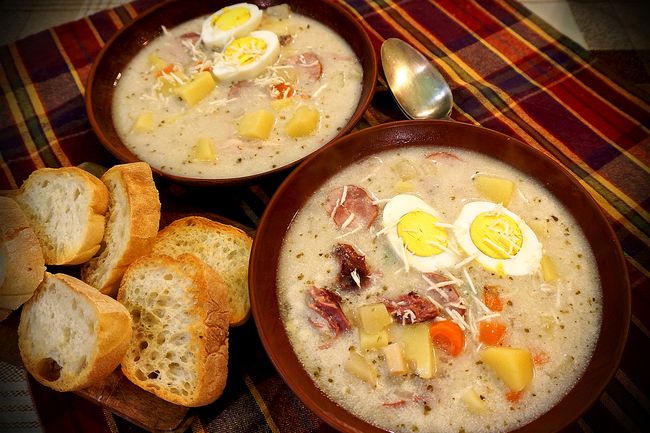
“What our grandmother cooks for us is memory and a family tradition. For we don’t throw our heirlooms out of the house, do we? And old recipes are one of these heirlooms. It is not an archaism but a living history. Besides, it may be very delicious.
“Local cookery is a living organism that should be pepped up with interest and new knowledge. Nor must we forget about its basis. There is such thing in Europe as European Culinary Heritage which Lviv oblast joined last year. There is also the Club of Galician Cuisine. Enthusiasts like me study this heritage and conduct master classes for all those who are interested in this.
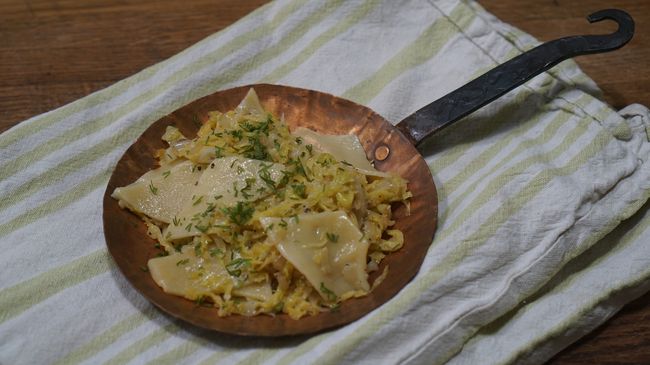
“My ‘brothers and sisters in arms’ and I are constantly looking for old cookbooks and recipes. We willingly cooperate with the restaurateurs who take interest in such dishes and their recipes. A dish ceases to be just a set of letters on a yellowed paper but becomes a living thing – which is good.”
Newspaper output №:
№43, (2018)Section
Time Out





